Class 12 Geography Chapter 22 Problems and Issues Geographical Perspective The answer to each chapter is provided in the list so that you can easily browse throughout different chapters SCERT Class 12 Geography Chapter 22 Problems and Issues Geographical Perspective and select need one.
Class 12 Geography Chapter 22 Problems and Issues Geographical Perspective
Also, you can read the SCERT book online in these sections Solutions by Expert Teachers as per SCERT (CBSE) Book guidelines. These solutions are part of SCERT All Subject Solutions. Here we have given Assam Board/NCERT Class 12 Geography Chapter 22 Problems and Issues Geographical Perspective Solutions for All Subject, You can practice these here…
LONG TYPE QUESTION & ANSWERS (MARKS – 5)
Q.1. Discuss the causes of pollution of the water of Ganga and Yamuna rivers.
Ans :-
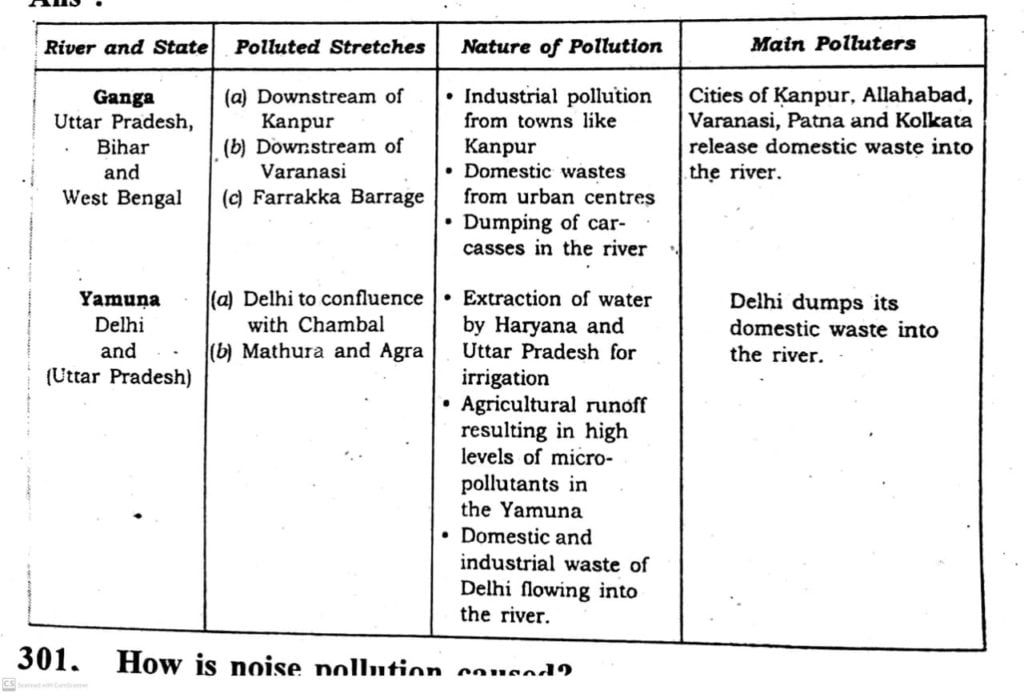
Q.2. How is noise pollution caused ?
Ans :- The main sources of noise pollution are various factories, mechanised construction and demolition works, automobiles and aircrafts. etc. There may be added periodical but polluting noise from sirens, loudspeakers used in various festivals, programmes associated with community activities. The level of steady noise is measured by sound level expressed in terms of decibels. (dB)
Of all these sources, the biggest nuisance is the noise produced by traffic, because its intensity and nature depend upon such factors as the type of aircraft, vehicle, train and the condition of road as well as that of vehicle (in case of automobiles). In sea traffic, the noise pollution is confined to the harbour due to loading and unloading activities being carried. Industries cause noise pollution but with varying intensity depending upon the type of industry.
Noise pollution is location specific and its intensity declines with increase in distance from the source of pollution, i.e. industrial areas, arteries of transportation, airport, etc. Noise pollution is hazardous in many metropolitan and big cities in India.
| Sl. No. | CONTENTS |
| PART-1 | |
| Chapter 1 | Human Geography Nature & Scope |
| Chapter 2 | The World Population Distribution, Density & Growth |
| Chapter 3 | Population Composition |
| Chapter 4 | Human Development |
| Chapter 5 | Primary Activities |
| Chapter 6 | Secondary Activities |
| Chapter 7 | Tertiary and Quaternary Activities |
| Chapter 8 | Transport and Communication |
| Chapter 9 | International Trade |
| Chapter 10 | Human Settlement |
| PART-2 | |
| Chapter 11 | Population Structure of India |
| Chapter 12 | Migration Pattern in India |
| Chapter 13 | Human Resources Department |
| Chapter 14 | Human Settlement of India |
| Chapter 15 | Land Resource and Agriculture |
| Chapter 16 | India’s Water Resources |
| Chapter 17 | Mineral and Fuel Resources in India |
| Chapter 18 | Manufacturing Industries of India |
| Chapter 19 | Planning and Sustainable Development in Indian Context |
| Chapter 20 | Transport and Communication in India |
| Chapter 21 | International Trade |
| Chapter 22 | Problems and Issues Geographical Perspective |
| PART-3 | |
| Chapter 23 | Assam Geography |
Q.3. Discuss the environmental pollution caused by solid wastes
Ans :- Environmental pollution by solid wastes has now become chaotic because of enormous growth in the quantity of wastes generated from various sources.
(i) Solid waste is a variety of old and used articles.
(a) Stained small pieces of metals, broken glass wares, plastic containers, polythene bags, ashes, floppies, CDS etc. are examples of solid waste.
(b) These discarded materials are also termed as refuse. garbage, rubbish etc.
(c.) They are disposed of from two sources :
(i) household or domestic establishments
(ii) industrial or commercial establishments
(iii) The huge quantities of ashes and debris from industries, thermal power houses and building constructions or demolitions have posed very serious problems.
(iv) Solid wastes cause health hazards through obnoxious smell, flies and rodents.
(v) They act as carriers of diseases like typhoid, diphtheria, diarrhoea. malaria and cholera etc.
(vi) These wastes cause frequent nuisance as and when these are carelessly handled, spread by wind and splintered through rainwater.
Q.4. Discuss the environmental problems in slum areas.
Ans :- The environmental problems in slum areas are :
(i) Slums are more differentiated in terms of the socio-economic, politico-cultural and other indicators of development than any other areas.
(a) At the top. there are farm houses and high income group localities characterised by well-developed urban infrastructures like wide roads, street lights, water and sanitation facilities. lawns, well-developed urban infrastructures like wide roads, street lights, water and sanitation facilities, lawns, well-developed green belt, parks, playgrounds and provisions for individual security and right to privacy.
(b) At the other extreme are the ‘slums’, jhuggi-jhopri clusters and colonies of shanty structures.
- They are inhabited by those people who were forced to migrate from rural areas to these urban centres in search of livelihood but could not afford proper housing due to high rent and high costs of land.
- They occupy highly unhygienic environment and degraded areas.
(ii) Slums are residential areas of the least choice, dilapidated houses, poor hygienic conditions, poor ventilation, lack of basic amenities like drinking water, light, toilet facilities etc.
(a) They are overcrowded having narrow street patterns prone to serious hazards like fire.
(b) Most of the slum population works in low paid, high risk prone, unorganised sectors of the urban economy.
(c) They are undernourished , prone to different types of diseases and illness and can ill afford to give proper education to their children.
(d) Poverty makes them vulnerable to drug abuse, alcoholism, crime vandalism, escapism, apathy and ultimately social exclusion.
Q.5. Classify wastelands according to the National Remote Sensing Agency.
Ans :-Same as Q. No.20
Q.6. Describe the functions and features of villages in India.
Ans :- The functions and features of villages in India :
(i) Both urban and rural settlements are different in their functions. But they sometimes complement each other.
(ii) Rural and urban areas have also emerged into two separate cultural, social, political economic and technological divisions.
(iii) India dominates in rural population (approximately 72 percent of the total population in 2001)
(iv) Gandhiji considered the villages the ideal republics.
(v) Most of the rural areas are still poor performing primary activities.
(vi) Here most of the villages exist as an appendix to the core urban centre forming its hinterland.
(vii) It is not true that urban centres exist as undifferentiated homogeneous entities in opposition to the rural areas.
Q.7. Give an account on the Wastelands in India.
Ans :- Students Do Yourself
MAP QUESTION : (MARK – 5)
Q.1. Mark the following on the outline map of India
(i) Major rice growing areas
(ii) Major wheat growing areas
Ans :-
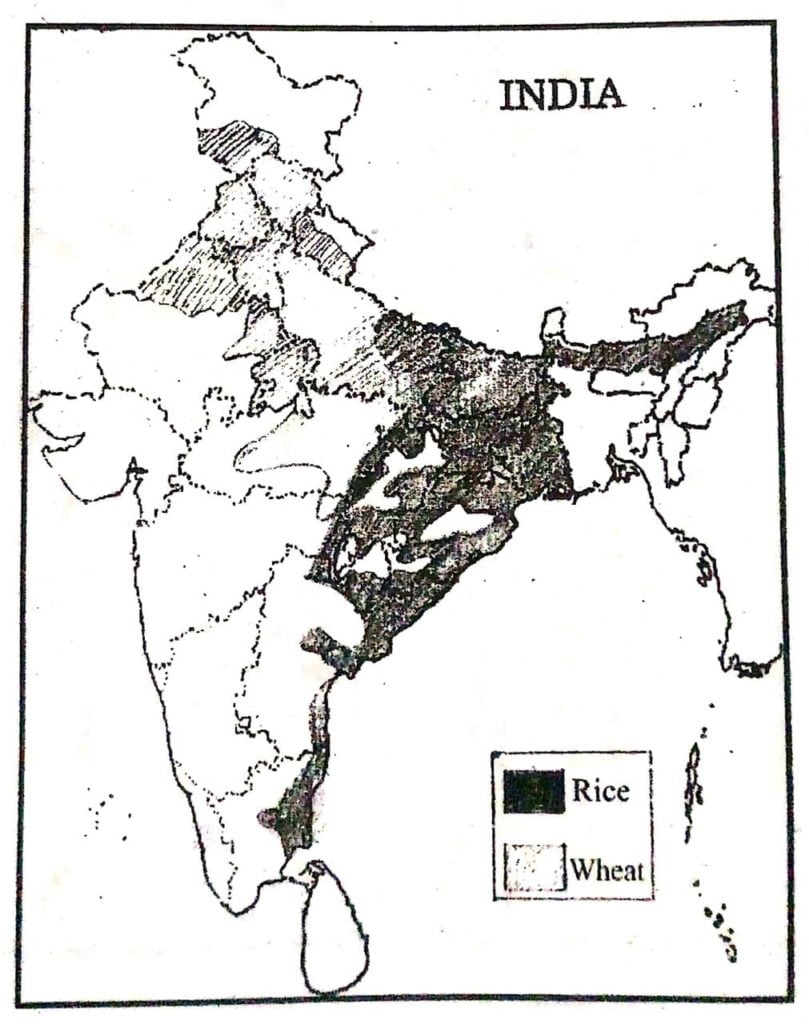
Q.2.Mark the following on the outline map of India
(i) cotton growing areas
(ii) jute growing areas
Ans :-
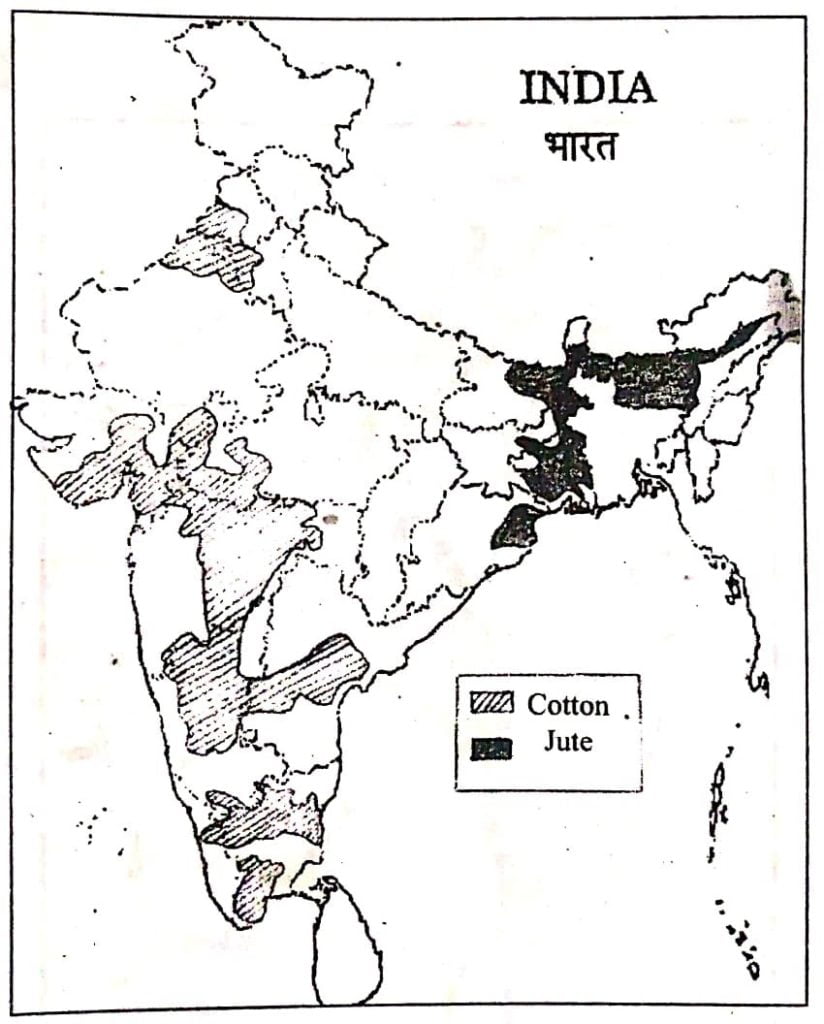
Q.3. Mark the following on the outline map of India
(i) Tea growing areas
(ii) Coffee growing areas
Ans :-
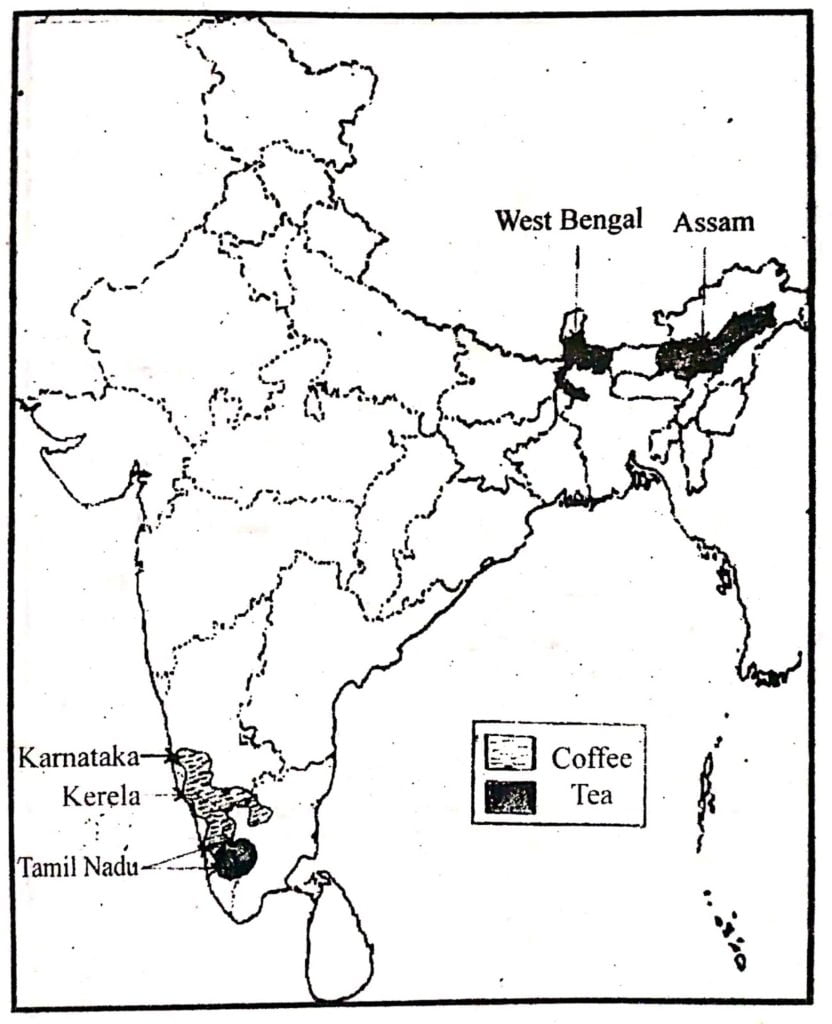
Q.4. Mark the following on the outline map of India
(i) Two major north Indian rivers
(ii) Three major south Indian rivers
Ans :-
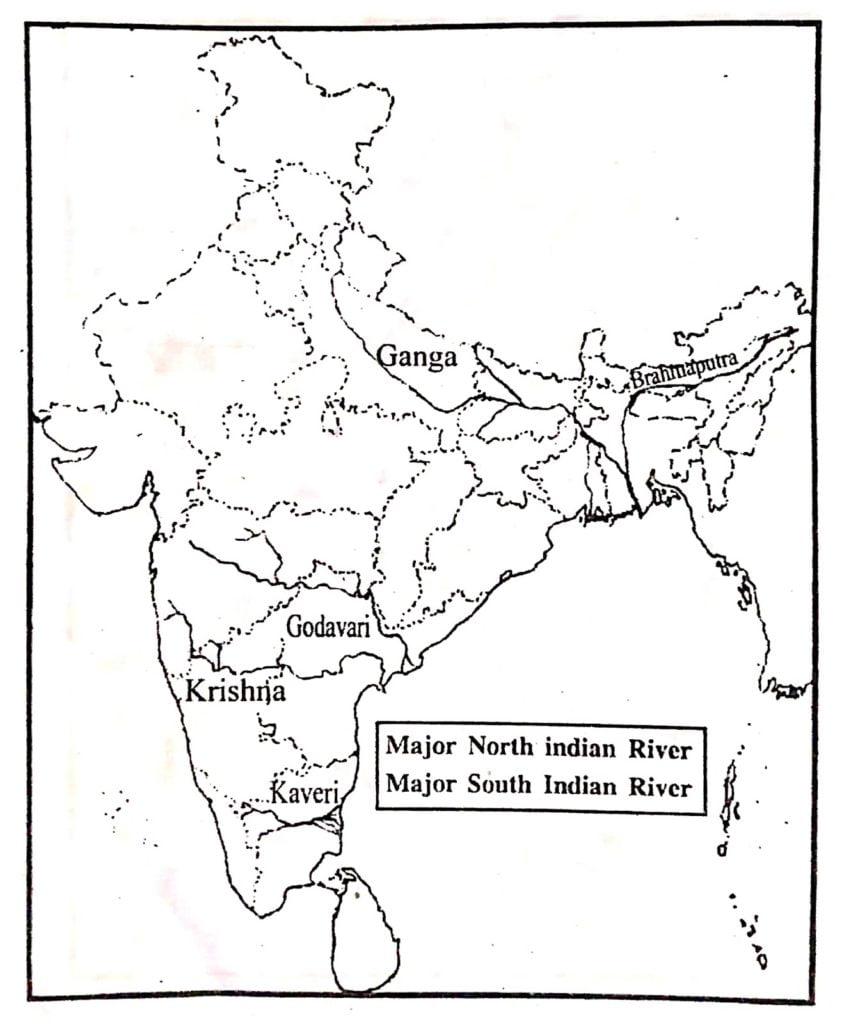
Q.5. Mark the following on the outline map of India
(i) Three major iron ore mining areas
(ii) Two major iron are exporting ports
Ans :
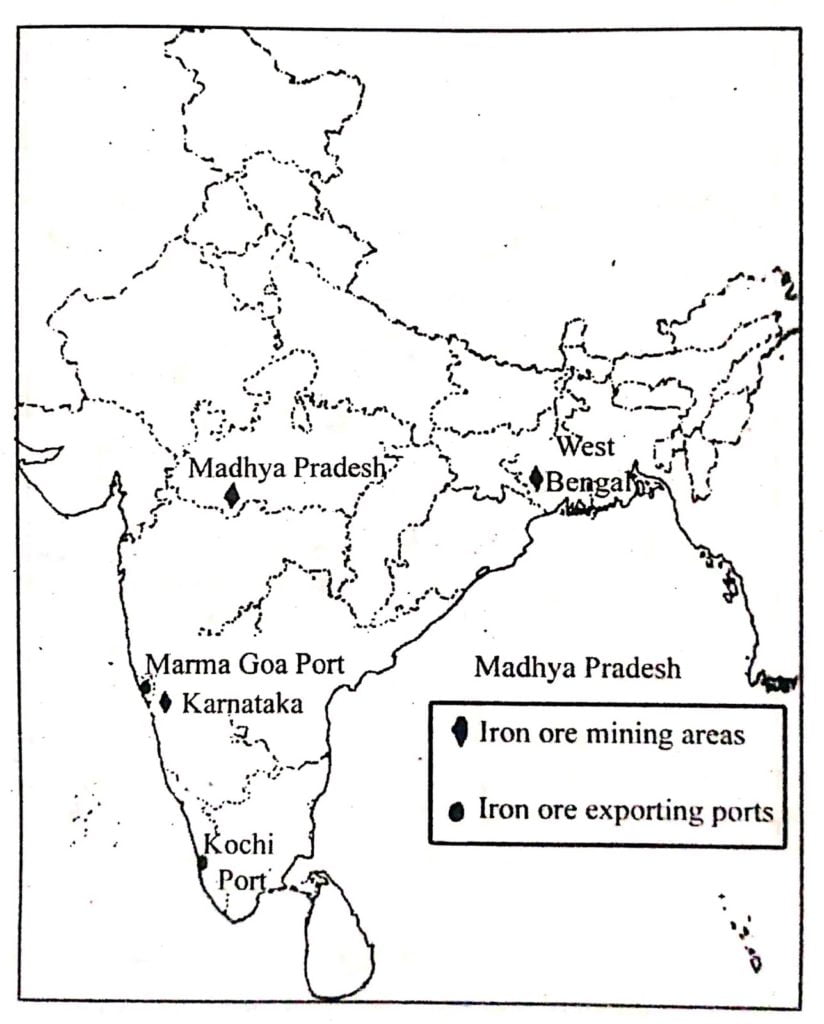
Q.6. Mark the following on the outline map of India
(i) Three major coal mining areas
(ii) Two major oil fields
Ans :-


Hi, I’m Dev Kirtonia, Founder & CEO of Dev Library. A website that provides all SCERT, NCERT 3 to 12, and BA, B.com, B.Sc, and Computer Science with Post Graduate Notes & Suggestions, Novel, eBooks, Biography, Quotes, Study Materials, and more.




